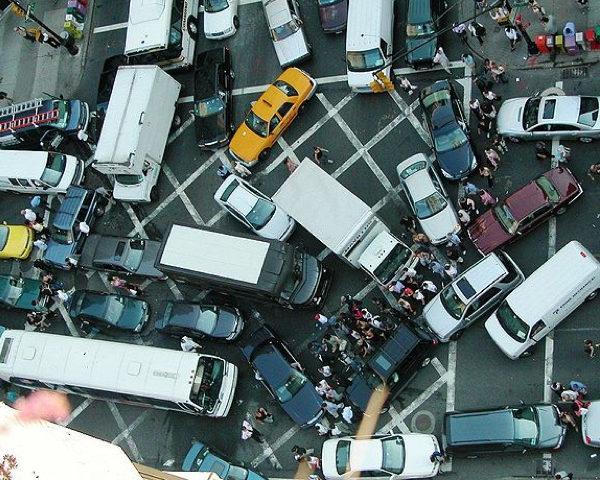There are at least nine car or driver advocates on the mayor's transportation "recovery panel."
There are only three bona-fide transportation planners.
New York City is facing an expected influx of car travel after the COVID-19 crisis passes — the result of millions of area commuters shunning transit — but it's unclear if the mayor's "sector advisory panel" is up to the challenge. That's not only due to the makeup of the panel — heavy representation from companies and organizations that have historically been part of the problem — but the idea of a panel itself.
"I was on one of these kinds of panels once," one Brooklyn businessman told Streetsblog. "Nothing really happened. It was just a way for the mayor to say he had a panel."
Another a lobbyist and former professor added, "These panels are often designed to avoid concrete action, all the while making people feel something important is being done. I hope I'm proven wrong."
That said, one member of the panel said that the broad nature of the group — the everyone-gets-a-seat-at-the-table idea — will make whatever recommendations it does make hold up to scrutiny.
"I accepted the appointment because of the diversity of the panel," said Quemuel Arroyo, a former DOT official who now runs Charge, a scooter docking company. "The panel has broad voices, which means there will be tough conversations. But everyone in the group knows that what we have now doesn't work. So the blame game is going to get old quickly. There is an urgent need for action."
That said one member of the panel went off the record to discuss the group's composition. "Oy," this board member said. "It's a strange panel — certainly not the kind of group [Department of Transportation Commissioner Polly] Trottenberg would have designed. It's just not clear what the mayor wants."
Two of the members of the panel — Cira Angeles of the Livery Base Owners Association (which has no website) and yellow cab medallion owner Jaswinder Singh — are donors to the mayor, the Daily News reported. Neither could be reached for this story, and City Hall declined a request to help us get in touch with them.
Streetsblog polled the remaining 22 members of the panel with two simple questions: "What do you believe should be the mission of the committee?" and "What positions do you personally hope to push as a member of the committee?" Here is what we heard (each person is identified as the mayor's office ID'd the person in the press release):
Quemuel Arroyo, Disability Transit Advocate
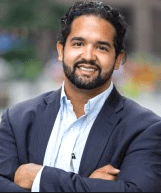
[Arroyo is also president of Charge, a company that makes docking stations for scooters and bikes]
My appointment to the panel was to bring in my universal design and accessibility expertise. As someone who uses a wheelchair, I will be voicing the disability community and I have to make sure that we don't make the street design mistakes we made 100 years ago. COVID has taught us we need space. It's unfortunate that it has taken this pandemic, but this could be a great benefit for the disability community. You know how horrible some of our streets are. Sometimes, I have to ride on the roadway. So my goal is to just remind everyone about the absentee voices, which so many times is people with disabilities. Space is not made to be accessible, and we are the last bodies that ever get to the table.
I can fold in my experience at Charge because the need for my docks is vast. Scooters are fun, but they can also get people to the subway or final destination. But it has to be done in a responsible fashion: I obviously don't want sidewalks cluttered. We can all get what we want: innovative transition.
Follow-up: Are you worried about the dominance of car-industry panelists?
I hope to marry the issues of climate change with the response to COVID-19. If we are honest in our goals to reduce greenhouse gas emissions, we need new transportation options such as more shared transportation and a lot fewer SUVs with single riders in them. I would ask [car supporters] to look at Seventh Avenue in Manhattan. It was given a road diet and look how successful it is. Look at pedestrians getting more space and the buses are moving and traffic hasn't stalled. It's working. And it can work throughout the city. We have to bring it home to them.
Jaqi Cohen, NYPIRG Straphangers Campaign
The mission of the mayor's sector advisory councils should be to help the city identify the right, most equitable priorities for its recovery plans. I hope to make sure the city is prioritizing the needs of bus riders as part of its recovery efforts. Prior to the pandemic, those considered essential workers made up 30 percent of all regular bus riders. A large number of frontline workers have continued to rely on buses to get to work each day throughout the pandemic. These workers have put everything on the line to protect our city and deserve far better transit than what they have access to now, which is the slowest bus system in America. If we want to reward these essential workers for carrying New Yorkers through this pandemic while also improving air quality, making streets safer, and providing transit for millions of New Yorkers who need reliable, accessible transportation, improving bus service will be vital to our recovery.
John Corlett, AAA NYS
As an organization advocating safety and offering numerous safety related educational programs to the public for all road users, including bike users and pedestrians, I think one primary goal of the committee must be to address mobility and safety concerns that have arisen as a result of the pandemic. A recent issue of concern to our Association is the recent reports of increases in speeding, for instance.
[He declined to answer follow-up questions.]
Bhairavi Desai, New York Taxi Workers Alliance
The mission of the committee should be to plan both the reopening of the city and the rebuilding of our transportation infrastructure that has been hard hit by the public health crisis and economic fallout. Transport workers, both drivers and MTA workers have been among the highest occupational casualties from COVID19, and they will remain at high risk given the nature of their jobs. We know of 49 drivers who have died.
Meanwhile, both mass transit and private taxis and for-hire industries have been all but shut down by the drop in ridership. For the taxi, livery and corporate black car industries in particular, this economic devastation comes after years of painful decline, and when many of their ridership is likely to remain sheltered at home even in the near future. There is a serious humanitarian crisis which can develop from this economic devastation. Our intakes show 82 percent of drivers are facing food insecurity, 76 percent were not able to pay rent over the past two months. The majority of our members also live in the Queens neighborhoods hit the hardest.
As we reopen and rebuild, it cannot come at the expense of the workers or the public. We're especially interested in massive street cleaning, including the airports, mass distribution of PPE, and strengthening our social lifelines such as food pantries and community clinics.
Josh Gold, Uber
I’m hopeful that this diverse group can offer creative guidance not only for the short term but for longer-term efforts that better utilize the city’s limited space to prevent a flight to car ownership, increase livability for residents and create new opportunities for small business owners like restaurants and bars as they adapt for the future.Some ideas I’m considering raising:
- Utilizing Uber‘s work with other cities, I hope to present some ideas on how the city can expand on existing curb pilots and initiate other efforts to promote active use over storage, especially in light of increased e-commerce, and the need to expand sidewalk space, protected bus lanes and microtransit like bikes and scooters.
- Utilizing previous research presented to the city, previous DOT pilots and Uber Freight’s expertise, exploring more aggressive measures, incentives and disincentives to promote off hour deliveries.
- Fast tracking Speaker Johnsons’s Streets Master Plan, which is set to currently start in December, 2021.
- Expanding on the success of the DOT’s 14th street busway.
- Utilizing more road space for restaurants and bars. Stone Street is a great example in NYC of something to consider expanding.
- Re-examining the need for off street parking requirements
- Quickly expanding data on package delivery.
I’ve also personally long advocated the city reimagine waste pickup to better utilize limited surface space and may raise it here.
Our extensive network of riders and FHV drivers may also be helpful to disseminating information.
Danny Harris, Transportation Alternatives
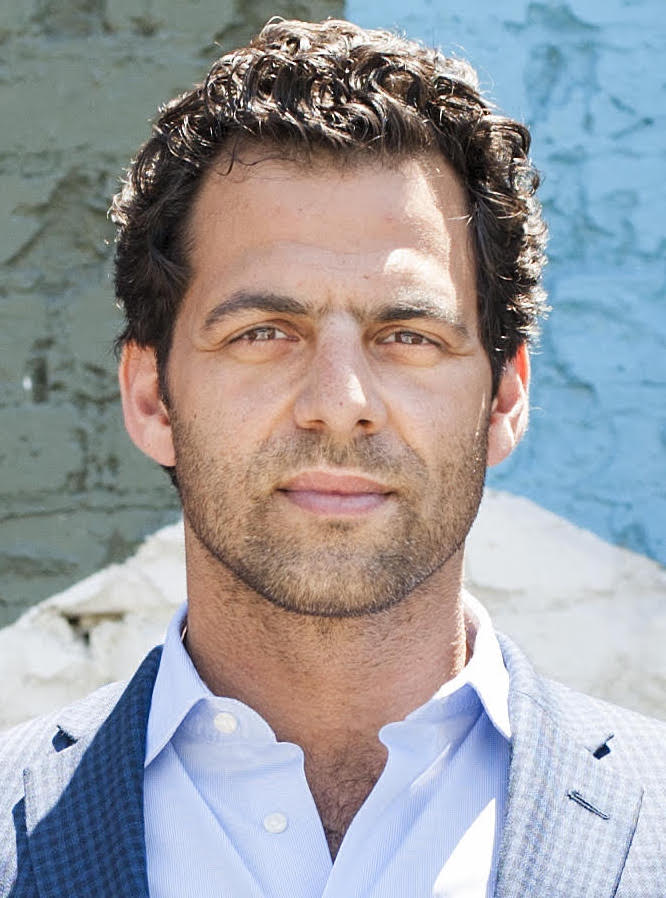
New York City has an incredible and underutilized asset in our streets, which make up 80 percent of our public space. As we emerge from this crisis, we must ensure that this space serves the most efficient and equitable purpose for all New Yorkers. At present, cities around the world are already reallocating street space from car movement and storage in support of physical distancing, reopening restaurants and bars, creating a network of protected bikeways and busways, expanding sidewalk space, and advancing climate change goals.
We have a once in a generation opportunity to rebuild New York as a more just, equitable, and resilient city for all residents. We must do so by building our shared future around people, not cars.
Follow-up: Are you worried about the dominance of car-industry panelists?
People will pursue their interests, but even if you are a car driver or representing car interests, your interest can't be bumper-to-bumper traffic. So I imagine we'll have a lot of shared objects to create a variety of transportation alternatives. I view it as an opportunity to scale what TA does. We all have been fighting trench warfare for way too long. Accessibility, bike infrastructure, street safety, Vision Zero. We need to scale that and we don't have time to waste. While we are hesitating, there are things happening in Paris and London and Seattle. We have to scale. We know what is a success.
Jen Hensley, Lyft and Laura Fox, Citi Bike
[Both panelists responded to individual requests for comment by having the company spokesperson send a joint statement that does not address our, or anyone's, questions.]
Lyft and Citi Bike are eager to partner with Mayor de Blasio and leaders from across the city to identify ways to ensure New Yorkers can get where they need to go safely in the weeks and months ahead. We are focused on solutions that leverage all of New York's regional transportation assets, including rideshare and bikeshare, to ensure riders can meet their essential needs, like getting to work, to the grocery store, and the pharmacy, while growing earning opportunities for drivers.
David Jones, Community Service Society and MTA Board Member

Right off the bat is how the city will coordinate with the MTA because they run the buses and the subways. The panel is called "surface transportation," but that's not how the city really operates. I'll ask right away how we coordinate. On the MTA board, I've been very worried about affordability. Now that the MTA is under enormous strain, there may be pressure to increase fares. But that could result in more people taking private cars. Low-wage people and students don't have that option, so making sure that you keep affordability is crucial. We must also come up with further discounts.
I'm also worried that we'll see this flood of cars, both private and Ubers and Lyfts if people are afraid to use the system. I'll ask the panel to look at other big cities. Europe and China have been through this. We have congestion pricing approved already. And the 14th Street busway was a success, but we have to be even more restrictive of cars. It may not be permanent, but this crisis allows us to do things that would have created firestorms. Buses need to go very rapidly through the streets, and some streets must be closed to private cars. Delivery times for grocery stores should be shifted to the nighttime. Some of those things would permanently recast our city.
The public is going to be a lot more amenable to these changes. The very issue that congestion pricing was addressing, the buses crawling along, this won't be acceptable to the public anymore. The public will support a mayor who insists on significant changes.
Follow-up: Are you worried about the dominance of car-industry panelists?
Uber, Lyft and the rest are critical and part of the solution. They've been badly hurt. It's appropriate that taxi interests are there, but there is going to be tension. Everyone will try to make sure their constituency is served. I will bring mass transit to the fore. Nothing revives the city economy like transit. White collar workers and gig workers may not be coming back to transit in the same numbers because they won't be going to offices, but the people who are stuck are people who have to show up at the deli or the McDonald's. Those are the people we have to accommodate.
Sarah Kaufman, NYU Rudin Center for Transportation
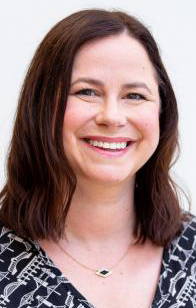
Despite the tragic circumstances, we have an opportunity to rethink our physical space and how it can best be used for both immediate and long-term needs. Most urgently, we need additional space for people to keep physical distance, while also ensuring safe and efficient travel for essential workers. We can make use of New York’s dozens of travel modes to build a mobility landscape that’s safe, efficient and possibly even enjoyable, for the time of the pandemic and in the long term.
In terms of cars, we're likely going to see an increase in New Yorkers buying cars — assuming we follow the same patterns as in Wuhan and other cities emerging from the pandemic. Cars are perceived to be the safest way to travel while avoiding the virus. But if New Yorkers (and the one million daily commuters into the city) drive to work/school/appointments/entertainment, we'll see absolute gridlock. New York will have to limit the use of personal vehicles, but can only do so by ensuring safe travel on public transit. That's the #1 challenge; the subway is essential to moving the most New Yorkers.
Social distancing on buses is already being carried out in several cities — tactics like blocking off certain seats to ensure distance between riders, and enveloping the driver in plexiglass or other material to ensure their safety. I'm hopeful that we'll see OMNY rolled out across the bus fleet shortly; all-door boarding will ease the crowds at either end of buses. And of course, we'll need dedicated bus lanes with enforcement.
A key need is wider sidewalks; there is no room to maintain six feet of distance on most city sidewalks.
I'm also hoping to see more and protected active travel lanes — accommodating the entire suite of micromobility that's emerged. The lanes should provide space bikes, e-scooters, e-skateboards, OneWheels — everything people are already riding regularly through the city (and new modes that continue to emerge regularly). Even for non-users of these modes, active transport lanes have been proven to calm traffic overall and improve pedestrian safety.
Robert Linn, MTA Board Member
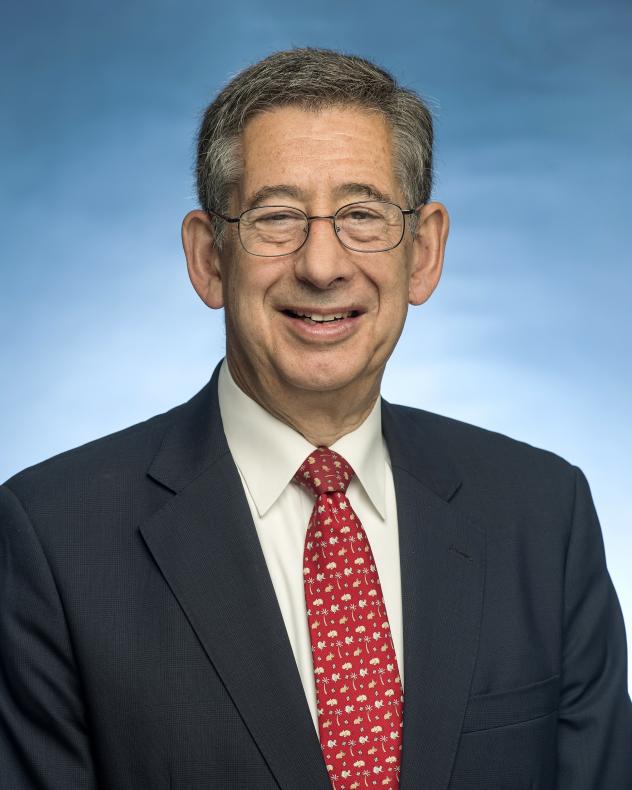
It's going to be a 12- to 18-month transition to get transit back to where it needs to get, so for the panel, question one is: what do you need to do to get to where you want to get? Everything is connecting to that.
My central issue is mass transit. I believe New York City cannot be New York City without a vibrant mass transit system. But how do you to come back from a system that is basically not operating at this point. I am extremely data driven. You can use data to get to solutions to difficult problems. And our problem is we need to convince the public that mass transit is safe, which will happen once there is sufficient [COVID-19] testing. There has been so much news about sickness and death — the MTA has more than 110 deaths — so it clearly has been a difficult place to work and to be. because of that, it's not surprising to me that people are concerned about using mass transit. ... Mass transit has a scary quality now.How do we get back to mass transit being loved — because most New Yorkers are very proud of their public transit.
Biking and walking have to be an important part of the recovery, too. People can get exercise, stay apart and get where they need to go. We need bike lanes. And we may need walking lanes!
Camilla Morris, Bus Association of New York
[The Bus Association of New York represents the broader interests of private motorcoach companies, their vendors as well as travel and tourism entities.]
What do I bring to this committee? I have 31 years of experience in the motorcoach industry that includes association work as well as management. I have been involved with New York City transportation issues for a number of years. I also am a Board Member of the American Bus Association that deals with national transportation issues of motorcoaches which also gives another perspective.
I will be sitting on this committee with an open mind and do not wish to propose any personal agenda that I may have or that is relevant until further information is disclosed.
What do I want from this committee? To be a productive member that ultimately brings the most logical, safest and efficient surface transportation to New York City neighborhoods and businesses while looking to the future of returning tourism.
Betsy Plum, Riders Alliance
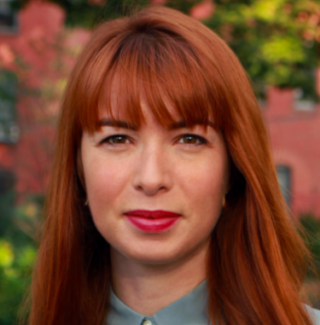
Cities across the globe are rethinking how their residents move as we emerge from this crisis. NYC has an opportunity to be a better and more equitable city, and a big piece of working toward that is reforming how our streets are used, and where precedent and priority is given. We’ve glimpsed what a different streetscape could be, and we now have the once in a lifetime chance to build a bolder, safer, and better moving NYC.
At the Riders Alliance, we’re thinking a lot about buses, and the opportunity in prioritizing bus rapid transit as we emerge from this crisis. Bus lanes and busways are key. We’ve seen real success with the 14th street busway, and throughout this crisis we’ve seen buses moving faster than ever and essential workers relying on buses. Ensuring buses can better move and maintain speed as we reopen is a real area for thought, and a key item I’ll be pushing for.
Follow-up: Are you worried about the dominance of car-industry panelists?
It would be premature to place judgment. We are glad to see surface transit being prioritized in an advisory council and, if we are going to be successful, we need everyone with an interest at the table. From our perspective, there's an opportunity here to seize the moment and maintain fast and reliable bus service. We're committed to that, no matter the makeup, and ensuring better transit is understood as central to New York's recovery.
Daniel Ramot, Via
[Ramot is CEO and co-founder of the shared ride cab company.]
We believe that transportation, and public transportation in particular, will be critical to the recovery of New York City post-COVID-19, and to ensuring our city thrives in the long term. The committee should focus on creating a concrete plan that outlines the investment, innovation, and regulations required to transform NYC’s transportation network into the modern, efficient, and equitable system that our city needs.
We see a critical role for technology and innovation in ensuring NYC’s public transportation system can emerge from the COVID-19 crisis stronger than ever. We believe the committee should identify meaningful investments in innovative transportation technology and solutions that will allow NYC to reimagine transit for the future and enhance mobility for all New Yorkers.
Sam Schwartz, Sam Schwartz Engineering
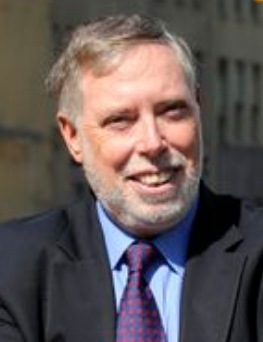
The committee must rethink the city streets and highways to reflect the immediate future, the re-entry period and New York City post-COVID for the next generation.
We should consider the past, how streets were used, what we did right, wrong, what did we do during past crises, and plan for the long term. We will need to tackle the near immediate conundrum caused by more people shying away from transit into cars and bikes with pedestrians needing more room than ever.
I covered some of this in my Daily News op-ed where I recommended quick implementation of congestion pricing with double the revenue goal, restrictions on driver-only cars, wider sidewalks, more bike facilities and other strategies.
Nick Sifuentes, Tri-State Transportation Campaign
As a transit advocate, these are exactly the kinds of bodies we need, and I think both committees should focus on making sure transit is safe for riders and operators now and post-shutdown, and that we address what sort of federal support will be necessary to ensure that's the case.I'm going to bring the perspective I've always had as a transit advocate — that we need to make sure transit is the best option for the millions of people who need to get around our region every day, I appreciate that both the governor and the mayor want that perspective, and I'm looking forward to making sure transit is safe, funded, frequent, and prioritized on these committees.
Jennifer Tausig, NYC BID Association
[Tausig runs a business improvement district in The Bronx.]
The mission of the committee is to take a look at all the ways we use streets in New York City, for all forms of transportation, and reimagine what is possible given the new reality that will seemingly include physical distancing for an extended period of time. Personally, as a BID director and small business advocate, I’m grateful for a seat at the table to ensure that the perspective of the small business owner is considered as any new visions for surface transportation arise out of the group.
Courtney Williams, the Brown Bike Girl
I founded The Brown Bike Girl to help organizations evaluate their approaches and institute solutions that do not overlook or omit the creation of transportation and mobility justice for people of color and the geographies that a legacy of supremacist urban policy has caused them to be concentrated into. On this committee, I will be evaluating every proposed idea and its roll-out timeline for whether it reasonably lends itself to resolving the currently accepted inequities of 1) disproportionately high cycling and pedestrian fatalities in black and brown neighborhoods and 2) absence of the essential facilities for mobility cycling — from protected lanes to bike share itself.My hoped-for outcomes include:
- stronger enforcement of traffic law on automobiles whose road errors are exponentially more likely to be fatal to a person than any non-proficient cyclist with measure employed to ensure enforcement does not find itself concentrated in black and brown neighborhoods as was stop-and-frisk, cycling violations, and current social distancing enforcement.
- Assertive educational campaigns for all road users (automotive and people-powered) that strongly indicate to returning car traffic that the new priority of reponed New York City is the congestion-reducing and pollution-free cyclist (and other micromobility commuters).
Could not be reached
Cira Angeles, Livery Base Owners Association
Ron Sherman, Metropolitan Taxi Board of Trade
Jaswinder Singh, cab owner
Declined to comment
Mary Dailey, TransitCenter
Kendra Hems, Trucking Association of New York
Tom Wright, Regional Plan Association
